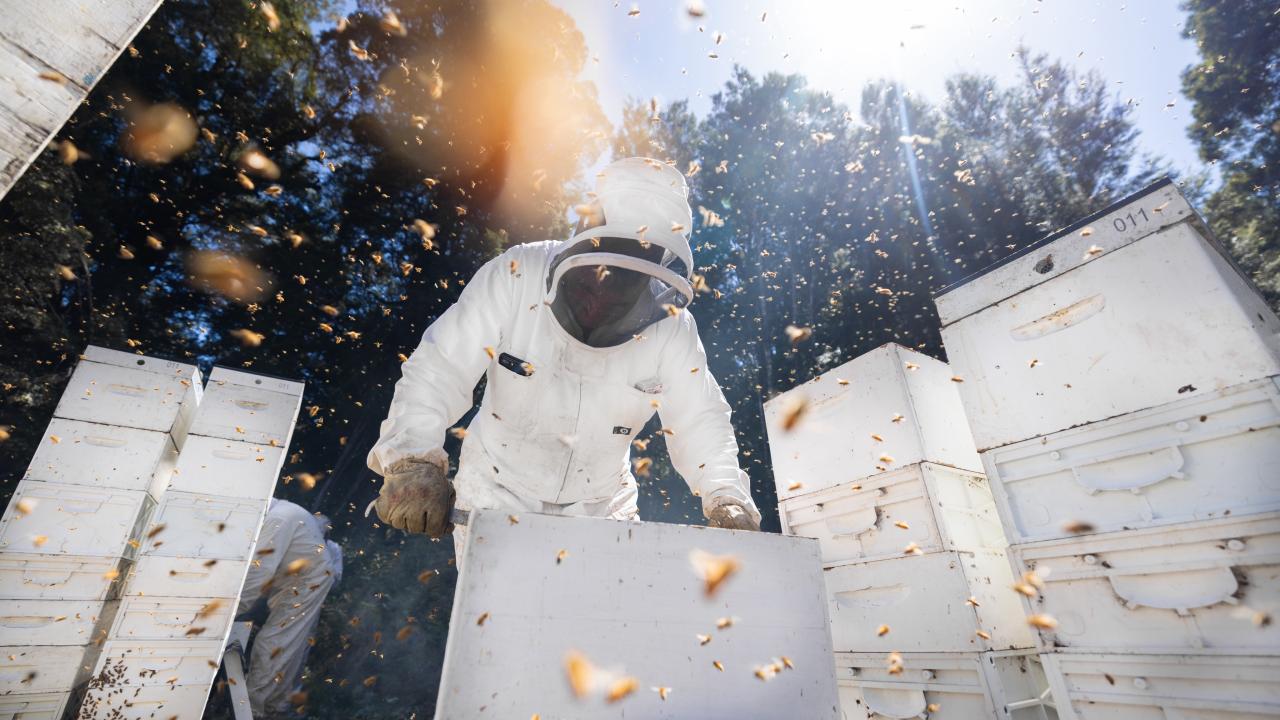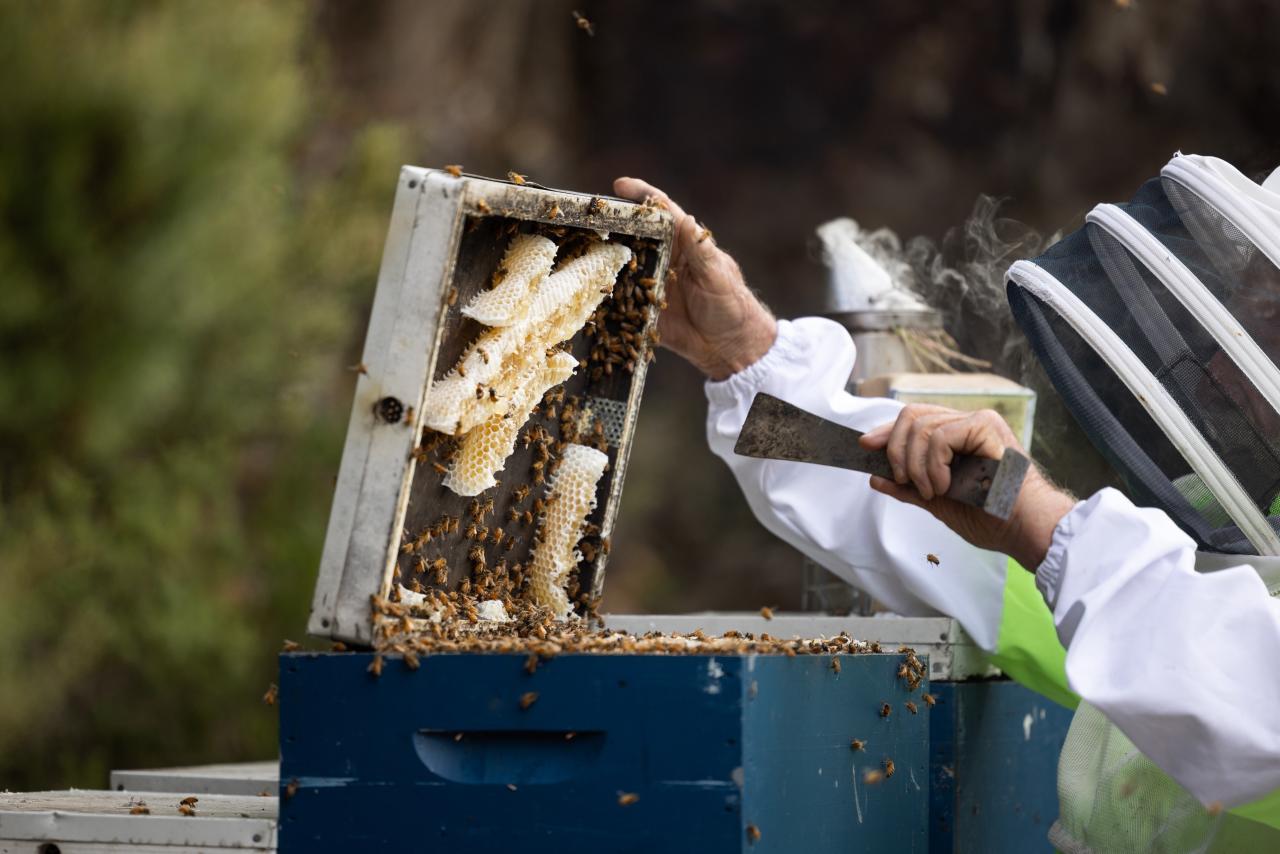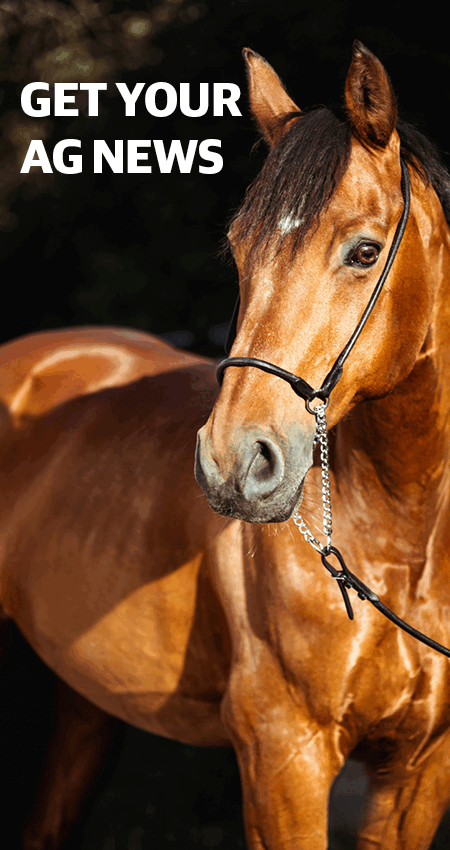Commercial beekeeping more important than ever according to new survey

Tasmania’s commercial bee industry has grown significantly over the past three years, according to the 2025 Tasmanian Beekeeping Survey, with the industry now valued at an estimated $17.6 million at the farmgate.
There are now 1867 registered beekeepers, 42,613 registered hives (77 percent owned by commercial beekeepers) and 1200 tonnes of honey is being produced each year with a farm gate value of $14.1 million.

While less than half of beekeepers invited to complete the survey did so, the themes of access to the leatherwood resource, biosecurity and skill shortages were identified in the feedback, consistent with the findings of the 2020-21 survey.
Primary Industries and Water minister Gavin Pearce said the State Government has been working hand-in-hand with the bee industry as it recognises the crucial role it plays in Tasmania’s economy, both through honey production and crop pollination.
Under the 2018-19 Bee Industry Futures budget initiative, the Tasmanian Government provided $349,000 for 20 projects to maintain vehicle tracks leading to hive sites in remote rainforest areas for registered beekeepers to access leatherwood resources, which have now been completed.
Bees play a crucial role in Tasmania’s economy, both through honey production and crop pollination,” Minister Pearce said.
“Of course, bees are far more than just honey producers; they’re indispensable partners in agriculture. Their pollination services underpin the success of our crop yields, making the health and sustainability of Tasmania’s honeybee industry essential to our food production and export success,” he said.
“These pollination services are essential to the success of pollination-dependent crops, which are estimated to be worth up to $400 million.”
The latest survey revealed a significant increase in pollination activity, with nearly 15,000 hives providing services - a 45 percent rise compared to 2020-21.
The survey results acknowledged ongoing challenges, including variable leatherwood yields arising from climate impacts, a shortage of skilled workers limiting business growth and sustainability and the potential for the incursion or establishment of Varroa mite to significantly impact the beekeeping sector.
Beekeepers are bracing for an incursion of Varroa mite, which has been detected in New South Wales, Queensland, Victoria and South Australia.
According to the National Varroa Mite Management Program, up to 97 percent of feral honeybee colonies are expected to be lost within a short period of time while the loss of managed hives is expected to be about 2-5 percent or potentially more.
Biosecurity Tasmania has released Tasmania's Varroa Mite Action Plan 2024-2034 and due to the increased risk of incursion, Tasmania has implemented a ban on the import of queen bees and other potentially infected materials such as used hives and equipment.
Some beekeepers are already planning to increase their hive numbers to offset potential hive losses from a possible varroa incursion and to meet increased pollination demand created by the loss of feral bee colonies.
Tasmanian Beekeepers’ Association president Lindsay Bourke said that with Verroa mite on the doorstep, now is the time to increase funding for detection and mitigation measures, however both Federal and State funding is coming to an end.
“There has been no extension of the Verroa mite management funding, and we’ll soon lose our one vital person, a dedicated Verroa mite expert, Carson McGinty, right when we need him most,” Mr Bourke said.
“We’ll fight to keep him on, we have to keep him on, and I feel that when the fruit growers and seed producers wake up to the impact of the disease they will insist he stays too.”
Mr Bourke was also critical of the amount of beekeepers paying a levy to repay the emergency funding (6 cents per kilo produced), saying around half are “hiding behind the rules” and not volunteering to assist.
Going forward the shining light for the honey industry is expected to be the state’s unique leatherwood honey production, which is considered key to growing both the farm gate value and export value of the honey industry, however access to the leatherwood resource continues to be a challenge.

The West Coast fire in February caused minimal damage to hives but impacted some leatherwood resources and climate variability also is impacting inflorescence and nectar abundance, which is having a flow-on impact on leatherwood honey yield.
The report states that leatherwood honey has the potential to achieve the profile garnered by Manuka honey, of which New Zealand exports approximately $245 million.
“To this end, the Leatherwood Market Development and Promotion project ($147,000) seeks to improve returns to apiarists from Tasmania’s unique leatherwood honey by building its market prestige and brand presence, through promotional campaigns and developing new international markets for this product,” the report said.
Meanwhile lack of skilled workers is limiting growth potential, and some apiarists indicated they may need to consider scaling down their operation to ensure business sustainability.
The 2025 Tasmanian beekeeping survey can be found on Department of Natural Resources and Environment Tasmania website: https://nre.tas.gov.au/beekeeping-survey




Add new comment